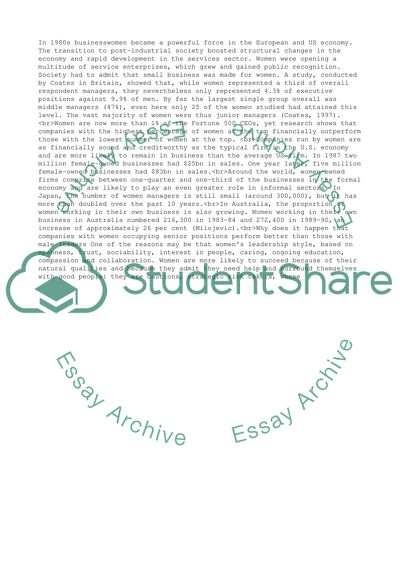Cite this document
(“The Role of Women in Organizations Essay Example | Topics and Well Written Essays - 3750 words”, n.d.)
The Role of Women in Organizations Essay Example | Topics and Well Written Essays - 3750 words. Retrieved from https://studentshare.org/business/1501594-the-role-of-women-in-organizations
The Role of Women in Organizations Essay Example | Topics and Well Written Essays - 3750 words. Retrieved from https://studentshare.org/business/1501594-the-role-of-women-in-organizations
(The Role of Women in Organizations Essay Example | Topics and Well Written Essays - 3750 Words)
The Role of Women in Organizations Essay Example | Topics and Well Written Essays - 3750 Words. https://studentshare.org/business/1501594-the-role-of-women-in-organizations.
The Role of Women in Organizations Essay Example | Topics and Well Written Essays - 3750 Words. https://studentshare.org/business/1501594-the-role-of-women-in-organizations.
“The Role of Women in Organizations Essay Example | Topics and Well Written Essays - 3750 Words”, n.d. https://studentshare.org/business/1501594-the-role-of-women-in-organizations.


